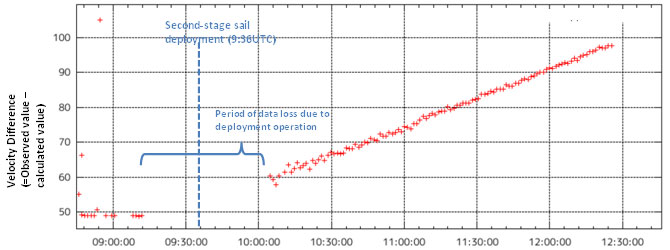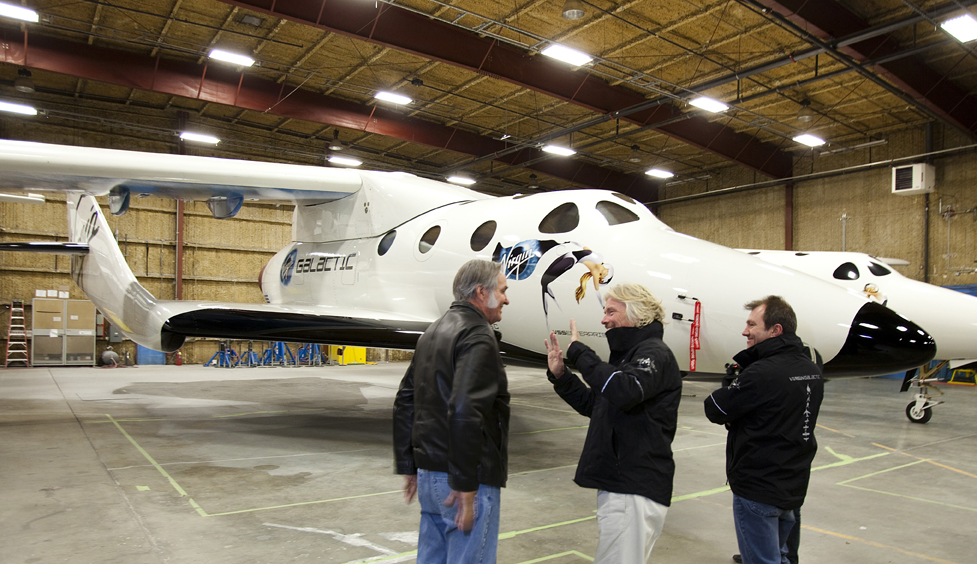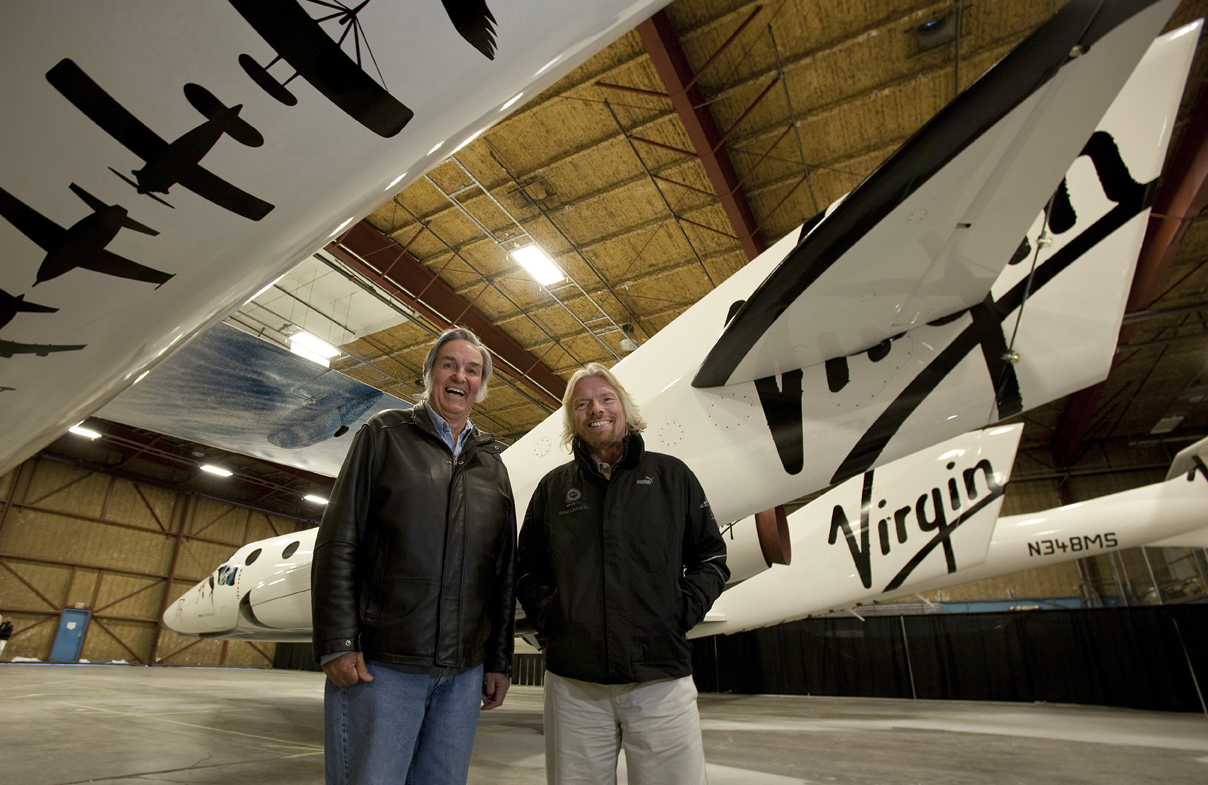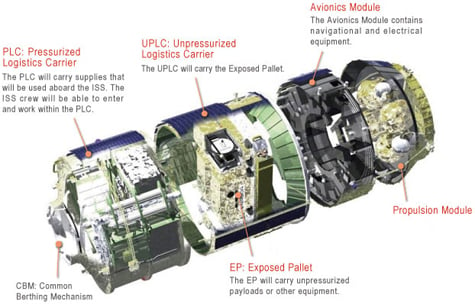Astronomers discover planet made of diamond | Reuters.

Atlantis and its four astronauts left Earth for the final space shuttle mission, which will cap off an amazing 30-year program of exploration, which launched great observatories, built an International Space Station, and taught us more about how humans can live and work in space.
With the International Space Station flying 220 miles high and east of Christchurch, New Zealand, Atlantis left Launch Pad 39A at NASA’s Kennedy Space Center in Florida at 11:29 a.m. EDT. There was a slight delay at T-31 seconds while retraction of the Gaseous Oxygen Vent Arm, or “Beanie Cap,” was verified. Atlantis will dock with the space station on Sunday.
via NASA – Space Shuttle.
They keep discovering more and more water everywhere!
Scientists detect Earth-equivalent amount of water within the moon.
Today, astronomers unveiled the most complete 3-D map of the local universe (out to a distance of 380 million light-years) ever created. Taking more than 10 years to complete, the 2MASS Redshift Survey (2MRS) also is notable for extending closer to the Galactic plane than previous surveys – a region that’s generally obscured by dust.
via CfA Press Room.
On Dec. 6 at 1:31 a.m. EST, NASA for the first time successfully ejected a nanosatellite from a free-flying microsatellite. NanoSail-D ejected from the Fast, Affordable, Science and Technology Satellite, FASTSAT, demonstrating the capability to deploy a small cubesat payload from an autonomous microsatellite in space.
via NASA ejects nanosatellite from microsatellite in space.
There is water on the moon … along with a long list of other compounds, including, mercury, gold and silver. That’s according to a more detailed analysis of the chilled lunar soil near the moon’s South Pole, released as six papers by a large team of scientists in the journal, Science Thursday.
via Moon Blast Reveals Lunar Surface Rich With Compounds | The Rundown News Blog | PBS NewsHour | PBS.
I knew there was water there, but gold, silver and mercury maybe makes it economical to get there! This is data from the LCROSS mission, where they plowed a satellite into the moon at 6000 kph and had another close behind measuring the particles with a spectrometer.
The Japan Aerospace Exploration Agency JAXA would like to announce that we have confirmed the successful acceleration of the Small Solar Power Sail Demonstrator “IKAROS” by photon 1 in the course of determining its precise orbit after its sail deployment. The IKAROS was launched by JAXA on May 21 2010 Japan Standard time and all the following time and dates are JST unless noted otherwise and has been under operation since then. The thrust by solar light pressure is 1.12 mili-Newton 2 which is the expected value. With this confirmation the IKAROS was proved to generate the biggest acceleration through photon during interplanetary flight in history.

via JAXA | Small Solar Power Sail Demonstrator ‘IKAROS’ Confirmation of Photon Acceleration.
Dr. Anthony Zuppero has managed to find a way that we could affordably make the push into outer space and get to inhabit the solar system. A physicist, he’s got the whole thing calculated out, this guy is the real deal. He’s written a very very readable book about his undertaking, which you can download for free in PDF form.
How does he do it? He uses a simple steam rocket which can haul immense loads of water (which is everywhere in the solar system – there are loads of near earth objects (comets / asteroids) and moons – even our own) with a massive crew area made out of water. It’s a serously interesting exploration through one man’s career and the troubles he ran into, as well as the triumphs of discovering that we can actually leave our planet, if we want to.
So… you want to be immortal… you want a celestial body named after you. What next? Unfortunately, the one body that does officially name stars and galaxies – the IAU – won’t let you put your name on one (their regulations are here). Or on a comet or asteroid either.
Fortunately there are plenty of options available for you. Some are less ‘valid’ than others, but none of them is really more than a novelty.
Commercial novelties
These companies basically put you in their own privately held catalogue and send you nice certificates.
Nice ones I’ve found are:
Name a Star Live. They’re cool because they let you use the SLOOH observatory to look at your own star.
The International Star Registry is nice because it’s been featured in loads of magazines and has several notable customers, including Nicole Kidman.
Free Star Naming
These are free but will charge you extra for not having a banner on the certificate you print yourself, having a nice looking bezel for the certificate, etc etc etc.
Free name a star is like this.
Scientific organisations
The Pale Blue Dot Project is cheap (only $10), plugs into the Google Sky addon and you can select your own star from a limited number that will be scanned for planets by the Kepler satellite.
The Stardome Observatory and the Sydney Observatory both also fund the observatory and are placed in their own catalogues. Unfotunately they only give you stars visible on the southern side of the globe.
BUT WHY STOP THERE?! BUY A GALAXY!
NameAGalaxy.com allows you to name a galaxy for free and download a certificate.
The Windowpane Observatory in Arizona gives you a star map as well – as telescope time . Galaxies are visible using the naked eye!
OR… The Moon awaits!
The Lunar Embassy thought this one up. No, you can’t enforce it, but it makes a nice certificate. They’re also offering land on Mars or Venus and it starts at GBP 16.75 but you can’t pick the location.
Now naming an asteroid…
Now these are different. The discoverer can apply for a name, which is then looked at by the allmighty IAU to whittle off living politicians, offensive people, unpronouncable names, etc. and then the name is awarded. Of course after 10 years, it becomes fair game, and a concentrated email campaign will help push the IAU over the edge and name it the way you like. see the Space.com article.
As for comets
The guidelines are pretty strict here – it goes to the discoverer(s), unless it’s discovered by a huge amount of people, in which case it gets a generic name. The guidelines of the IAU are here.
Finally, a word for solar systems
Nope. Neither for NEO’s (Near Earth Objects). Space.com has a good article on the naming conventions here if you’re really interested.
Burt Rutan’s Scaled Composites has unveiled the Virgin Galactic sponsored Spaceship two, the ship that will bring commercial space travellers into space at reasonably affordable prices.


The Allan Hills 84001 Meteorite which landed on earth has been examined and they’ve discovered that the tiny magnetite crystals it contains are chemically consistent with being formed in bacteria – they’re basically little fossils. They’re pretty sure the rock, which has floated around for around 16 million years, comes from Mars as it matches chemical compositions with the relative proportions of various gases measured in observations of the atmosphere of Mars made by the Viking spacecraft in the 1970s.
Evidence of life on Mars lurks beneath surface of meteorite, Nasa experts claim – Times Online.
This site lists satellites, the ISS and other astronomical objects you can see in the sky based on your own location. It’s a very comprehensive, easy to use astronomy site with object you can and can’t see.
They are on now, and the first teams are already succesful, being able to climb 899m at 3.9 m/s!
The game is to get a robot up a line being held by a helicopter in flight. The robot is powered by just a laser beam.
Japan is committed, now NASA has 3 teams qualified to try to get their laser powered robot to climb a cable hanging from a helicopter one km in the air.
Elevator to space? They’re really trying :: CHICAGO SUN-TIMES :: Nation.
Between the planets and moons are gravitational corridors, tubes that intersect at lagrange points, which can be used to travel between celestial bodies using hardly any fuel, only for course correctional purposes. These corridors can be likened to ocean currents. The trade-off is now between speed and fuel consumption: you can use almost zero fuel between a planets’ moons because the distance allows it, but should you want to drift to another planet using just the corridors, this would take years.

Scientists unveil plan designed to cut cost of space travel – Telegraph.
Japan has an automated logistics supply vehicle for the International Space Station, which has been launched today for the first time. It’s composed of pressurised and upressurised areas and will be stopped at 10 m from the ISS. Using the robo hand, astronauts can dock it. It’ll stay there as a kind of larder for a month and then decouple and return to earth. In further versions of the HTV they’ll modify it to carry humans, so there’s a third way to get astronauts up to the ISS, but it can also act as a lifeboat.

Japan hurls first space freighter at ISS • The Register.